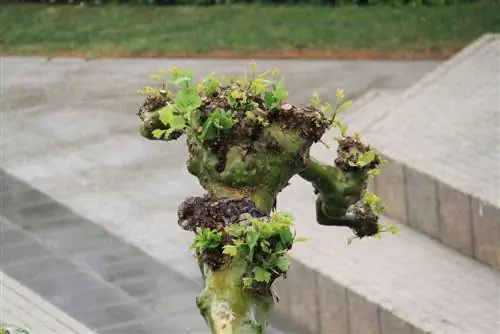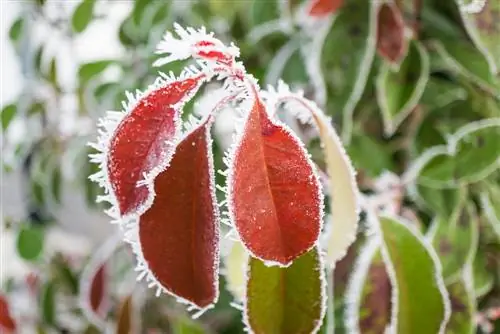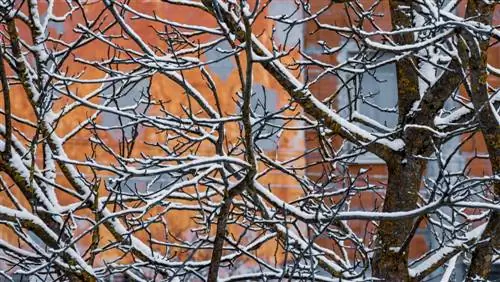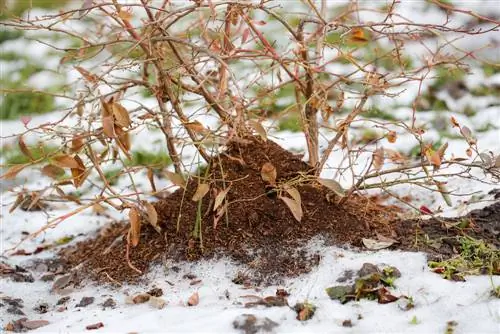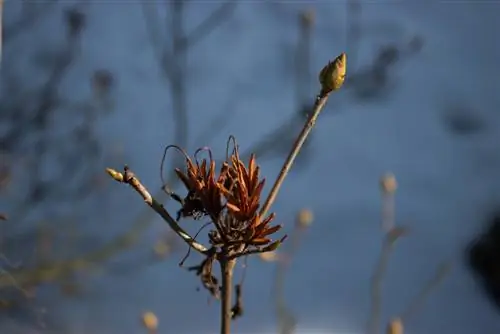- Author admin [email protected].
- Public 2023-12-25 17:45.
- Last modified 2025-01-23 11:22.
The plane trees are winter-hardy plants. In good time in autumn they prepare for the cold season by completely shedding their leaves. Only in spring, when it gets milder again, do they reveal fresh greenery. But the frost can strike unexpectedly.
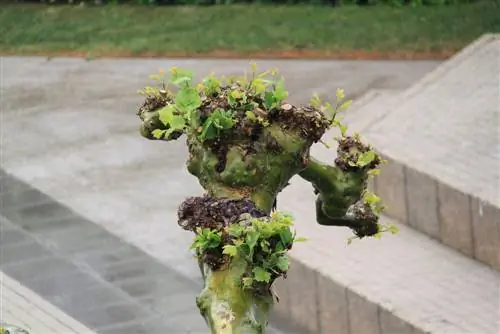
How do you recognize frost damage on plane trees and what can you do about it?
Frost damage to plane trees can be recognized by deformed, drooping leaves and frozen shoots. To save the tree, you should hope for new growth, water it as needed and possibly support it with fertilizer. If temperatures continue to be below zero, young trees can be covered with fleece (€72.00 on Amazon) or foil.
Leaf and flower shoots in May
As long as a plane tree stands in the garden without its leaves, sub-zero temperatures have little effect on it. Since the tree normally produces its flowers and leaves in May, ideally these frost-sensitive parts of the plant will never encounter frost. Every year in mid-May the frost-free season begins in this country.
Mild temperatures in spring
Every now and then it happens that in March and April the weather is mild for weeks and offers many sunny days. In such years, all plane tree species sprout before their usual time. This in itself is not a disadvantage if the weather remains mild. But the weather is unfortunately unpredictable.
- night frosts can still occur until mid-May
- even after long warm periods
- the delicate leaves and flowers freeze
Tip
If the tree is still young and small, you can cover its early leafy crown with fleece (€72.00 on Amazon) or foil as soon as the weather report announces a drop in temperature.
Detecting frost damage
The frost damage to the plane tree is clearly visible to everyone, especially if the tree has already sprouted vigorously. The new shoots are frozen and the leaves hang deformed. In trees with a lush crown, only the foliage at the top of the crown can freeze, while the lower branches still remain green.
Fungal infestation must occasionally be expected on plane trees. Leaf browning is one of the diseases whose symptoms can be confused with frost damage. A hasty and incorrect diagnosis must be avoided.
Note:The frost damage becomes more serious the more often and deeper the thermometer falls below zero. It also depends on how protected the tree location is.
Consequences for further development
Frozen leaves are irretrievably lost to the plane tree. But this tree cannot survive without leaves, so we can hope for new growth.
- Observe the tree afterwards
- after a few weeks new growth should begin
- water the tree as needed in the meantime
- if applicable. support with fertilizer
If a tree no longer sprouts at all, it must be lost because it lacks the energy for further growth. Fortunately, this case rarely occurs.

